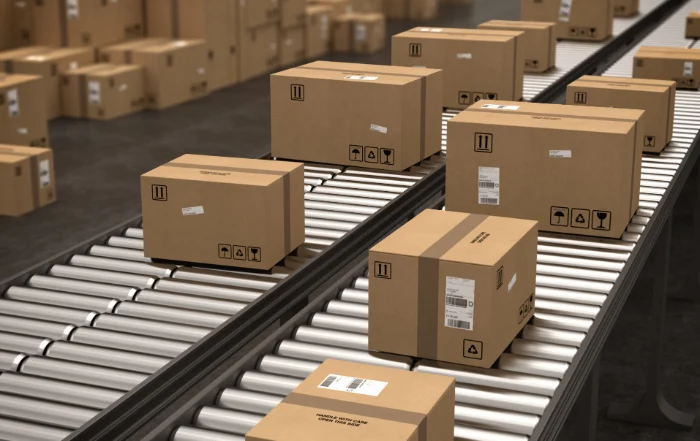The convenience of e-commerce has revolutionized the way we shop, but behind the scenes lies a dark side that remains hidden from most consumers.
Let’s imagine a scenario: you order a sleek new gadget and a couple of trendy outfits from an online retailer.
However, upon arrival, the gadget fails to function, and one of the outfits doesn’t fit you properly.
Naturally, you decide to return these items. Little do you know, the environmental consequences of your seemingly innocuous return can be far-reaching.
Returns may appear simple, often with free return options for consumers, but the management of these returns can impose significant costs on retailers.
In fact, the financial burden associated with returns amounted to a staggering $816 billion in lost sales for retailers in 2022 alone.
To compound the issue, the return process, including transportation and packaging, generated approximately 24 million metric tons of carbon dioxide emissions, contributing to the planet’s warming.
It’s an unsustainable predicament that poses a challenge for retailers and the environment.
Let’s take a closer look at the intricate world of product returns and the ecological impact that accompanies them.
The journey of a return begins with transportation. After repackaging your unwanted items, you head to a designated carrier, such as UPS, for the return. UPS then transports these items to the retailer’s dedicated warehouses for processing.
However, this transportation step not only incurs costs for the retailer, but also adds to carbon dioxide emissions as trucks and planes traverse long distances.
Moreover, the plastic, paper, or cardboard used in return packaging ultimately becomes waste.
Processing a return is a laborious and time-consuming task, often taking two to three times longer than the initial shipment process. Workers meticulously unpack, inspect, repack, and reroute the returned items.
The additional labor and resources required to handle returns further escalate costs for retailers, especially in today’s tight labor market.
With each return, workers must assess the items, decide on the appropriate course of action based on the return reason, and allocate resources accordingly.
If the warehouse deems an item suitable for resale, it is repackaged and sent to another warehouse, where it awaits the next consumer’s order.
This restocking and reselling process incurs additional miles in transportation, contributing to the carbon footprint of the return.
While in-store returns can reduce warehouse and transportation costs, the convenience of driving to a physical store may not always be feasible for consumers.
As a result, only about a quarter of online purchases are returned in person.
When an item, like the defective gadget you got with free prime shipping, is deemed non-resalable, the warehouse worker may send it back to the manufacturer for repair and refurbishment. This process entails additional packaging, loading on trucks and planes, and more carbon dioxide emissions.
If the gadget can be repaired, it can be sold as a refurbished product at a lower price, aligning with the principles of a closed-loop supply chain that promotes sustainability by reusing products rather than discarding them as waste.
Of course, just to get to the point of resalability requires three times the fuel, twice as much packaging, and more labor.
However, there are instances where the cost of repairs surpasses the potential resale value of a product.
In those cases, it makes more financial sense for retailers to dispose of the item rather than attempting restocking or refurbishment. Sadly, this often leads to returned products finding their way to landfills, some even shipped overseas.
Astonishingly, in 2019 alone, an estimated 5 billion pounds of waste from returns ended up in landfills. By 2022, this figure nearly doubled to approximately 9.5 billion pounds.
The era of free returns, initially pioneered by Amazon, quickly became the norm as other retailers sought to compete. However, the sustainability implications and financial burdens associated with this practice are prompting a reevaluation.
In 2022, the percentage of retailers charging for return shipping rose from 33% to 41%. Retailers are exploring various strategies to reduce return rates, waste, and losses, which ultimately impact consumers through higher prices.
More To Discover
- New Side Hustle: Duck Egg Prices Are Soaring, Now Is The Time To Let Your Kids Have New Pets That Pay for Themselves
- Confessions of a Neighborhood Leaf Thief
- Regional Differences Drive Distinct Motivations for Energy-Efficient Home Upgrades Across the U.S.
- Seaweed Farming for Carbon Dioxide Capture Poses Ocean-Sized Challenges in Scaling Up
What Can You Do As A Consumer?
Retailers are adopting innovative approaches such as shortening the return window, implementing limitations on frequent returns, or even ceasing to offer free returns.
Virtual dressing rooms and clearer fitting guides are being employed to reduce clothing returns, alongside high-quality photos and videos that accurately depict size and color.
By utilizing these tools and paying attention to sizing details, consumers can play an active role in curbing the expanding carbon footprint of the retail industry.
In conclusion, while returns may seem like a simple process for consumers, they exact a significant toll on both retailers and the environment. The financial and ecological costs associated with managing returns demand attention and alternative solutions.
By making informed purchasing decisions, utilizing virtual resources, and understanding the impact of returns, consumers can contribute to a more sustainable future.
It’s time to unveil the hidden ecological consequences of our shopping habits and work towards a more responsible and environmentally conscious approach.



















